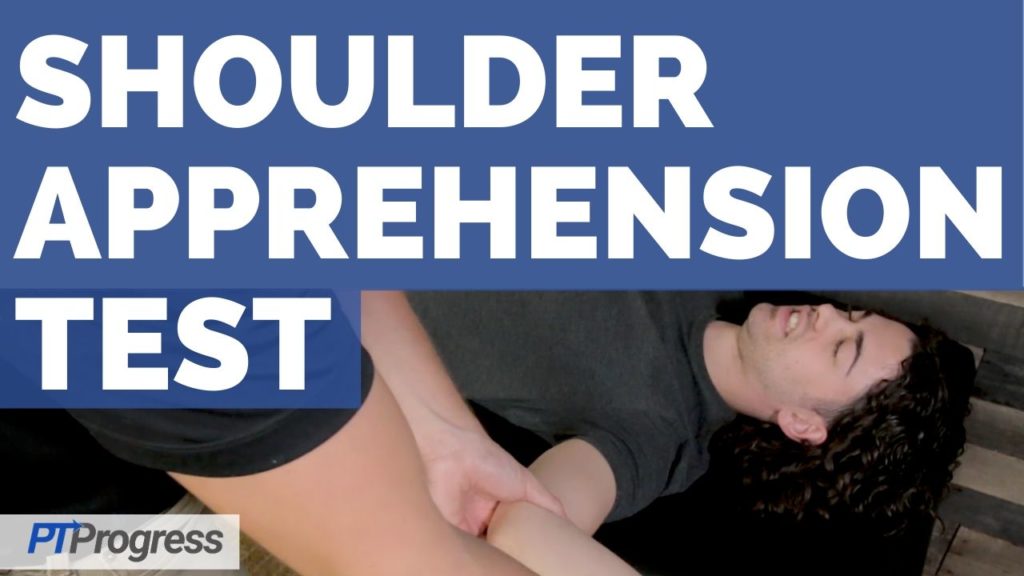
The Apprehension test is used to help identify shoulder instability and is considered one of the best tests for identifying this pathology.
How to Perform Apprehension Test
Position of Patient: Patient is sitting or standing with arm relaxed at side.
Performance: The examiner passively places the patient’s arm into abduction of 90 degrees and 90 degrees of elbow flexion. The examiner slowly rotates the arm into external rotation monitoring for apprehension or pain.
How to Interpret Apprehension Test
Positive Finding: The test is considered positive if the patient demonstrates apprehension with external rotation of the shoulder. Shoulder pain is not an indicator of a positive apprehension test and may suggest impingement. If the patient demonstrates apprehension, proceed to the Jobes relocation test for further confirmation.
Test Accuracy / Reliability / Evidence:
Sensitivity and Specificity & Likelihood Ratio
Sensitivity = 0.72
Specificity = 0.96
+LR = 20
– LR = 0.29
Source: Farber AJ, Castillo R, Clough M, et al: Clinical assessment of three common tests for traumatic anterior shoulder instability. J Bone Joint Surg Am 2006; 88: pp. 1467-1474
The Apprehension test is used to help identify shoulder instability and is considered one of the best tests for identifying this pathology. To perform this test, position the patient in sitting or standing with their arm relaxed at side.
The examiner will place the patient’s arm into abduction of 90 degrees and 90 degrees of elbow flexion. Then, slowly rotate the patient’s arm into external rotation monitoring for apprehension or pain.
The test is considered positive if the patient demonstrates apprehension with external rotation of the shoulder. Pain, however, is not an indicator of a positive apprehension test and may suggest impingement. If the patient demonstrates apprehension, proceed to the Jobe’s relocation test for further confirmation.

